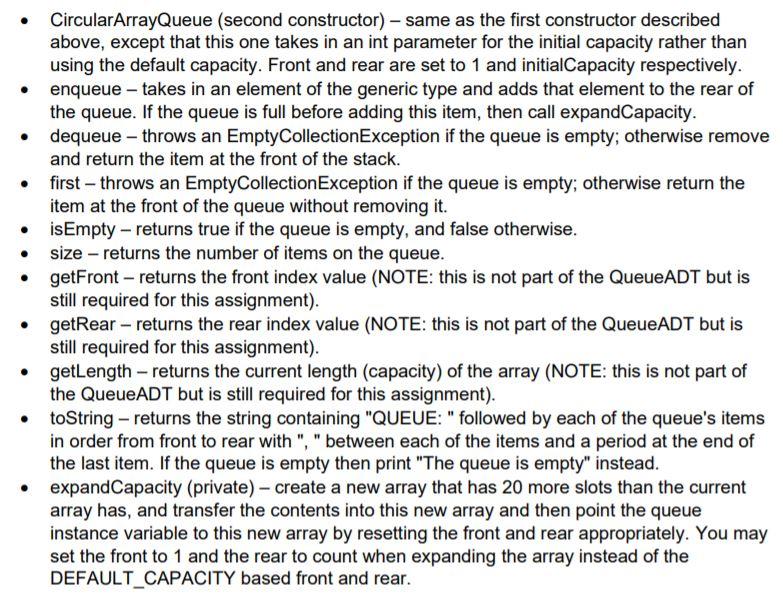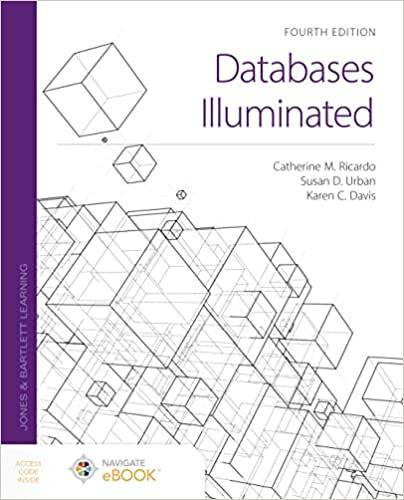Question
I started this but I am getting some errors. Please help. Circular Array.java public class CircularArrayQueue implements QueueADT { private int front; private int rear;


I started this but I am getting some errors. Please help.
Circular Array.java
public class CircularArrayQueue TesrQueue.java public class TestQueue { public static void main (String[] args) { // --------------- Test 1 --------------- [isEmpty and toString] CircularArrayQueue boolean test1Success = false; if (Q.isEmpty() && Q.toString().equals("The queue is empty")) { test1Success = true; } if (test1Success) { System.out.println("Test 1 passed"); } else { System.out.println("Test 1 failed"); } // --------------- Test 2 --------------- [enqueue and size] boolean test2Success = false; //System.out.println(queue); Q.enqueue("one"); Q.enqueue("two"); Q.enqueue("three"); Q.enqueue("four"); Q.enqueue("five"); System.out.println("Size is " + Q.size() + "and " + Q.toString()); if (Q.size() == 5 && Q.toString().equals("QUEUE: one, two, three, four, five.")) { test2Success = true; } if (test2Success) { System.out.println("Test 2 passed"); } else { System.out.println("Test 2 failed"); } // --------------- Test 3 --------------- [expandCapacity and size] boolean test3Success = false; String[] letters = new String[] {"A","B","C","D","E","F","G","H","I","J","K","L","M","N","O","P","Q","R","S","T","U","V","W","X","Y","Z"}; for (int i = 0; i if (test3Success) { System.out.println("Test 3 passed"); } else { System.out.println("Test 3 failed"); } // --------------- Test 4 --------------- [dequeue] boolean test4Success = false; boolean t0 = false, t1 = false, t2 = false; String str = null; for (int i = 0; i for (int i = 0; i if (t0 && t1 && t2) { test4Success = true; } if (test4Success) { System.out.println("Test 4 passed"); } else { System.out.println("Test 4 failed"); } // --------------- Test 5 --------------- [first] boolean test5Success = false; t0 = t1 = t2 = false; if (Q.first().equals("n")) { t0 = true; } for (int i = 0; i if (Q.first().equals("c")) { t1 = true; } for (int i = 0; i if (t0 && t1 && t2) { test5Success = true; } if (test5Success) { System.out.println("Test 5 passed"); } else { System.out.println("Test 5 failed"); } } }
Step by Step Solution
There are 3 Steps involved in it
Step: 1

Get Instant Access to Expert-Tailored Solutions
See step-by-step solutions with expert insights and AI powered tools for academic success
Step: 2

Step: 3

Ace Your Homework with AI
Get the answers you need in no time with our AI-driven, step-by-step assistance
Get Started


